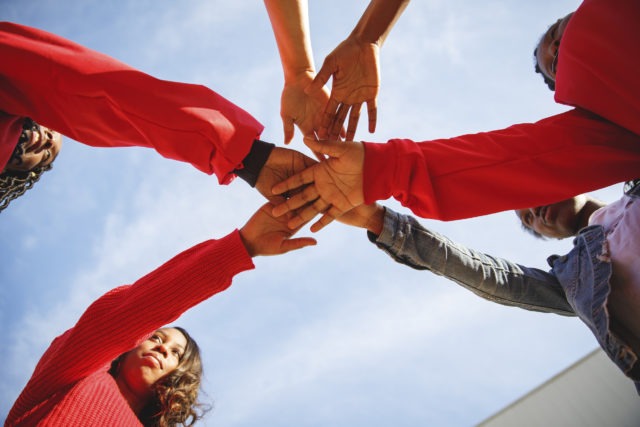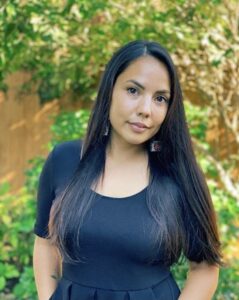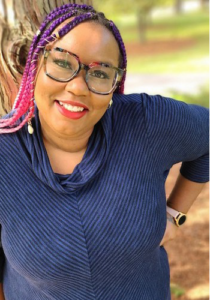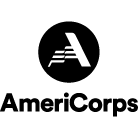Q&A with City Year’s Equity Strategists

City Year’s commitment to equity
In July 2020, City Year created an Office of Equity as part of our ongoing efforts to advance diversity, belonging, inclusion and equity (DBIE) both within and outside of the organization and to become a more equitable and just anti-racist organization. Through deliberate listening, learning and self-examination, we seek to work in partnership with our communities, AmeriCorps members, staff and alumni to put what we are learning into practice.
The Office of Equity is responsible for driving large-scale strategy, leading organization-wide trainings, and spreading DBIE and anti-racism approaches throughout City Year. This work will strengthen the organization and support our emerging systemic change agenda, which includes creating joyful, personalized and equitable learning environments for the students and schools we serve.
The two strategists leading this work, Sofia Voz and Emerald Anderson-Ford, have served the City Year community for many years in various capacities. Sofia has worked with City Year Seattle AmeriCorps members and school partners to support work with students and teachers. Emerald, a City Year New Hampshire alum, joined City Year as a recruitment manager for City Year New Hampshire before transitioning to support diversity efforts for the national recruitment team. The Office of Equity is planning on adding a Senior Vice President of Equity to the team later in the fiscal year.
We sat down with Sofia and Emerald to talk about their vision for this critical work and what it means for City Year to live up to its commitment to “become an anti-racist organization.”
Why is this equity work important for City Year?
Emerald Anderson-Ford (EAF): We have this cool opportunity to be able to serve these amazing communities and brilliant students. But to do that responsibly, we have to recognize the privilege that we have in that. We do this equity work because we cannot operate under the assumption that we know what’s best for our students and their communities. They know what’s best for them. Period. But we want the opportunity to work alongside them—in partnership— and to help elevate their needs and brilliance.
We’re trying to actively move away from the idea of saviorism here. We can’t do that anymore and for us to break ourselves from that, we have to start listening to and understanding what is important to different folks, cultures and communities. If we don’t check our assumptions and unlearn some of the things we’ve told ourselves about the communities we serve, then we don’t deserve to be in partnership with them.
Sofia Voz (SV): There have always been pockets of great equity work being done by various people throughout the organization—both at the site and national level. But at a certain point, we had to acknowledge that there was a lack of an org-wide coherent strategy. It was important for the organization to begin to think strategically about where we’re headed and how we’re going to build equity work into all of our workstreams, in to the ways we operate. This all culminated in the creation of our office.
There was always a need for this intentional and strategic work in our organization, and given the current national focus on the centuries-old systemic racial inequities in our country, we could no longer wait.
This past June, City Year put out a statement to staff members that we are on a journey to becoming an anti-racist organization, which is the first time we have publicly said that. The statement is a step in the right direction but now it’s a matter of working to figure out what that means for us in theory and practice. What are we going to do differently to live up to that commitment?
What is one thing you’d like people to know about City Year’s equity journey?
SV: I often think about how the organization has caused harm for staff and for the folks we served in the past. Inequitable promotion practices as well as a uniform policy and corps performance management system that reinforced white supremacist worldviews and ideals are just a few examples of this. We can’t move forward without looking at our past approaches to the work and how they have affected individuals and communities alike. As a department, we’re interested in what real community restoration looks like. This is something I hear a lot from alums, current staff and corps members.
We need to be looking back to repair the harm done while we’re looking forward and working to become a more equitable, anti-racist organization. It’s going to require us to get vulnerable because a huge part of this work is self-awareness. And if we as an organization can name and own up to our mistakes, well, then that is a step in the right direction and toward community healing.
EAF: Earlier, Sofia mentioned that there are pockets of equity work happening throughout our network. And while we haven’t always gotten it right, I do think that we have a good foundation for this work. This has truly been a journey for our organization and so many of the changes that have happened haven’t always been widely known.
With this new Office of Equity, we are trying to be more transparent with where we are on the journey, when we have missteps, and how we are looking to reconcile and continue to move forward in our learning and evolution. It will take time, and we hope that people will continue to walk this path with us.
How is City Year currently prioritizing its equity work? What does some of this work look like long-term?
SV: We’ve built a three-part learning series that every AmeriCorps and staff member will go through this year. And though a workshop series doesn’t solve all of our equity challenges, it does create a common entry point into this work for everybody in the organization, which is something that has been missing for a very long time. When we think about where we want to go, it can be hard because we have folks who are starting in all different places in that journey and we want our community to have a common foundation and understanding of our expectations when it comes to equity work. We want these sessions to help folks begin to examine their own identities and privileges and come away with a better understanding of the history of race and education in this country and how systemic injustices affect and shape inherent biases and misconceptions about the students and schools we serve.
I think that’s important for folks to wrestle with so that we can continue to build off of that as we move forward together, in this collective way.
EAF: In addition to our three-part training series, we’ve also launched national affinity groups for all staff, which has been a big deal. City Year sites have had affinity groups before but, we’ve never had them at a national level. We piloted the groups in the spring and summer and they went well. So now, we’re digging our heels in and it’s very exciting—just building that structure out so that we can continue to host these true spaces of belonging.
More generally, we’re also starting to think critically about what anti-racism is in theory and practice at City Year. All of this is undertaken with the understanding that this has to be cross-departmental work—our impact, development, programming, communications, recruitment, people teams, etc. all have to be in partnership. This isn’t easy work and it is going to take some time. And I think it’s also going to have to overlay with us re-understanding our mission and vision as an organization.
Lastly, I think we’re looking to lay a strong foundation for this new department. We’re trying to understand what supports and resources we need to make this work sustainable and meaningful. What do actual personnel look like in the department? How do we want to understand our workstreams? It’s important for us to think strategically about the structure of the department and how we can have the most impact across the network and make sure that we’re tapping into the expertise of our amazing staff and partners.
Is there a space to engage currently serving City Year AmeriCorps members and alums in this work?
SV: Definitely, yes. We envision having corps members and alumni as part of the working group that will come together to think about our mission, vision and anti-racism. When we think about power structures in our organization, AmeriCorps members are often the ones with the least power yet they’re the ones who are doing the groundwork and having this most impact.
I also think Gen Z understands equity work in a different, more nuanced, and advanced way than other folks do. There’s just so much to learn from our corps members, and I truly believe they’re able to lead in this space in ways that just many folks are not. Moving forward, we’ll be thinking about how we can use their voices as more than just input—but necessary and integral to any decision that we would make around what anti-racism looks like for us.
EAF: The short answer is yes. We owe it to our corps to fold them into this process. Our 35,000+ alums are such an incredible group of people. They have so much knowledge, perspective and expertise; we would be remiss if we didn’t consider their voices and concern and include them in this work
This whole process is new and we’re trying to figure out what the collaboration with alumni will look like. So, while right now, I can’t tell you exactly what it means to build this out, I can tell you that they will be central to this work. Our alumni community is always trying to find ways to stay engaged with us and there’s a responsibility we have to make sure that we’re doing right by them and engaging with them in meaningful ways.
There’s no way we can do this without our currently serving corps and our alumni being involved.
What are some of the personal joys and challenges of this work?
EAF: This work is deeply personal to me as a Black woman for many reasons. I’ve learned so much about my own voice, resilience and strength as I continue to engage in equity work at City Year. The joy that comes with finding yourself in that way is immense. And this may seem like a small, silly thing but one of my biggest joys is being able to work with Sofia. We make a great team and we’ve created this working relationship that is so intentional and honors who we are as people. The work we do hits home on so many levels for both of us. It’s important to me that I have a teammate who I can trust and work well with. I think we both find ways to push each other’s thinking around the work.
As for challenges, well, even though I think City Year, as an organization, is very willing to engage in this work, we’re simply not where we need to be. I think as we continue working to make our education system a more equitable space for our students, we’ll also continue to run up against challenges outside of our organization. We have to understand that when we engage with corporate partners or school district partners, their systems and ways of working are also affected by the same system of white supremacy. So how do we also work to dismantle some of those anti-racist ideas and narratives in that space? It’s complicated and very tricky. But it’s something we have to be aware of and continue to work at.
SV: I find joy in this work because I care so deeply about it—and it’s personal for me. I have a 3 ½ year old daughter who Black and Latinx and she’s about to enter the public school system, in a school where City Year serves. So, the stakes are just very personal for me—I’m in this work quite literally for my daughter.
Not only do I need our school systems to be better for students who look like her but, I also need City Year service to be better for students who look like her. I need our AmeriCorps members who might be showing up at school with her every day to understand who she is as a whole person and to push other adults in the building to strive for that as well and to be able to support her in ways that are authentic and meaningful for her. We should be investing in all our students as if they were our children and I truly find joy in being able to work at the intersection of education and equity.
On the other hand, because this work hits so close to home it can also sometimes be overwhelming. It can just be like this work is something you can’t turn off. For example, part of our work is staying up to date with current research and literature, which 90% of the time happens in off-work hours. And while it’s useful in helping us to frame the way we want to approach this anti-racist work, it also surfaces things for me as an individual. It can be a bit exhausting and make it hard to sit in the joy of life in general. However, joy is an act of resistance and I try to live my life embracing that truth.
This interview has been edited for length and clarity.

Sofia Voz

Emerald Anderson-Ford
This is the second of several stories that explore City Year’s work to advance diversity, belonging, inclusion and equity both within and outside of the organization. Read part one below.
 Equity-based Educational Research: Emerging Lessons from City Year’s work
Equity-based Educational Research: Emerging Lessons from City Year’s work
Interested in applying to City Year? Start your application or connect with a recruiter today:
Related stories
Yes, the holiday season can be stressful—making travel plans, wrapping up work before winter break, figuring out what gifts to...
Read more about Three reasons students may be thankful for their student success coachEvery year, thousands of young people decide to join AmeriCorps programs for a year (or more!) of service, helping to...
Read more about Everything you need to know about returning for another year as a City Year AmeriCorps memberCity Year is committed to providing our AmeriCorps members with resources, opportunities and support that help them to achieve their...
Read more about Empowering Futures: City Year Baton Rouge’s Partnership with Bottom LineFatimah Abdulmateen takes service seriously. Fatimah served two years with City Year as an AmeriCorps member, making her an alum...
Read more about A City Year alum with a passion for service—both here and abroad















